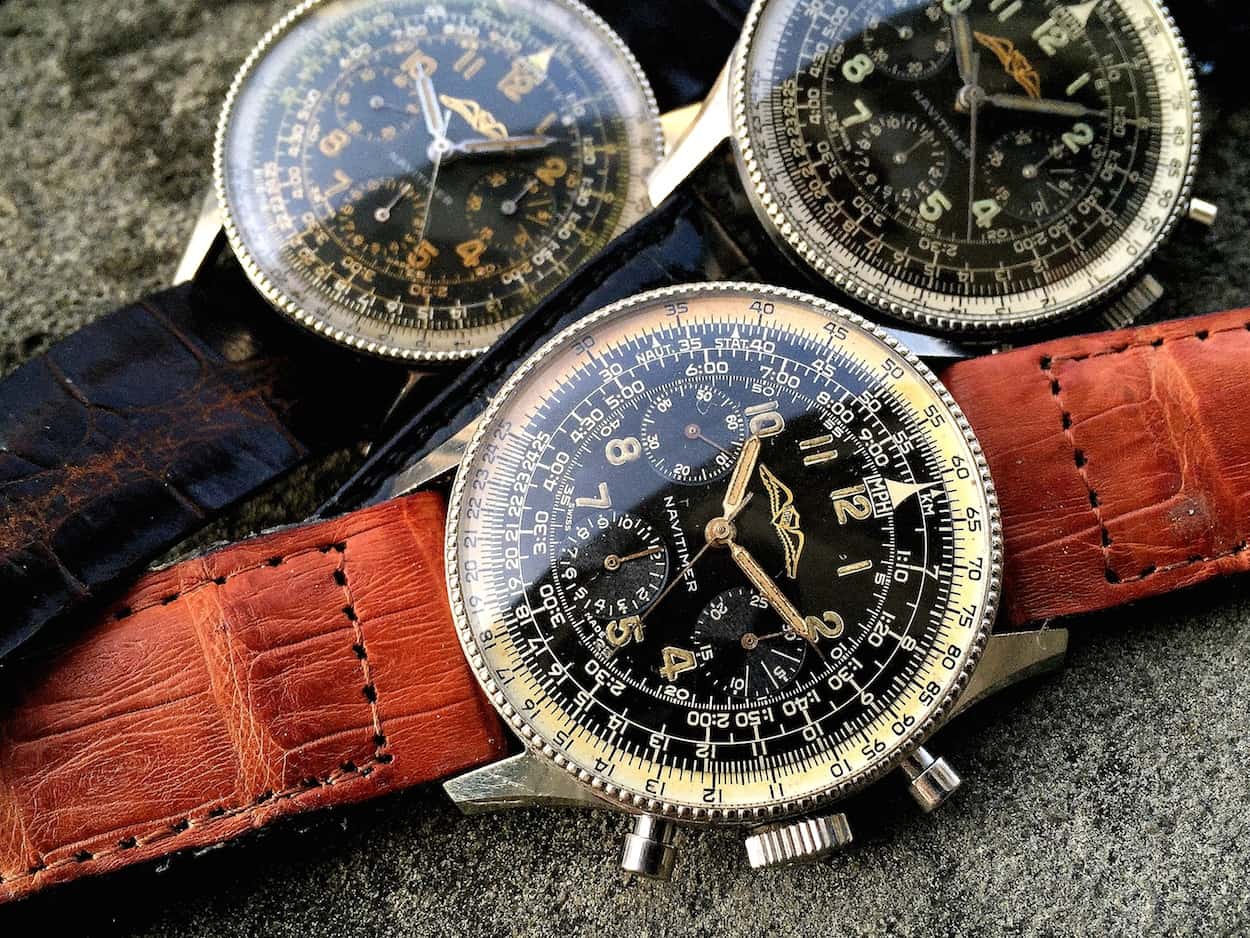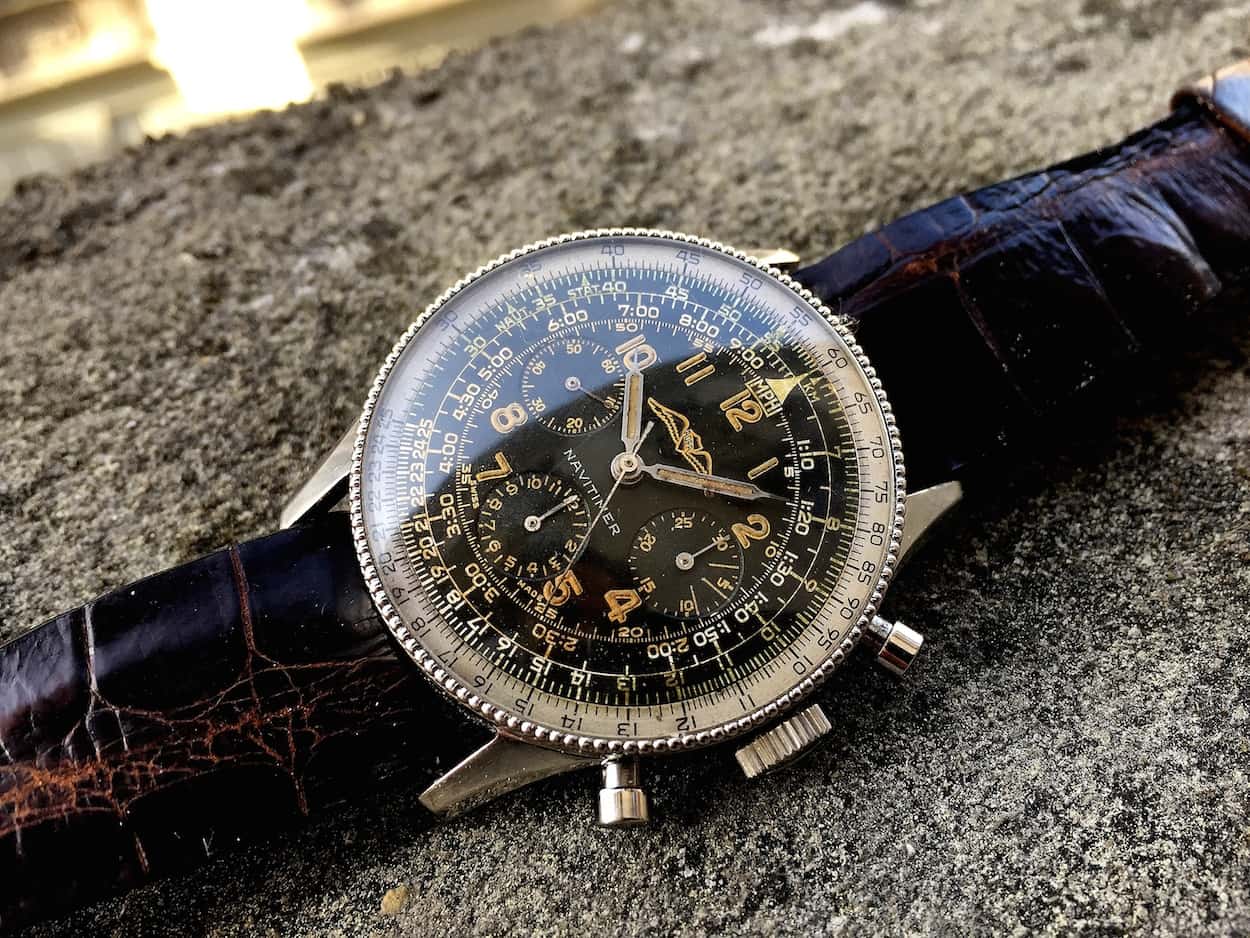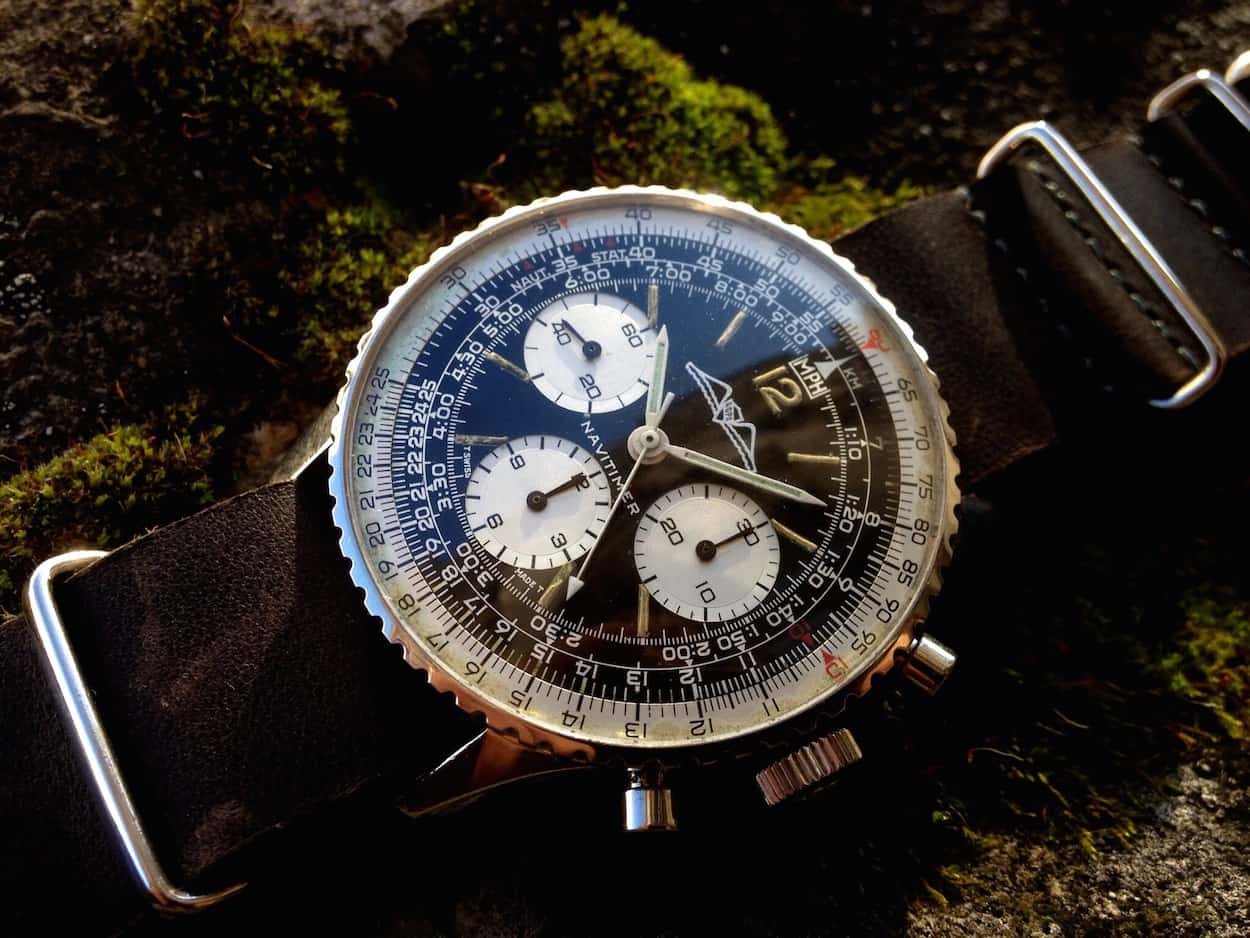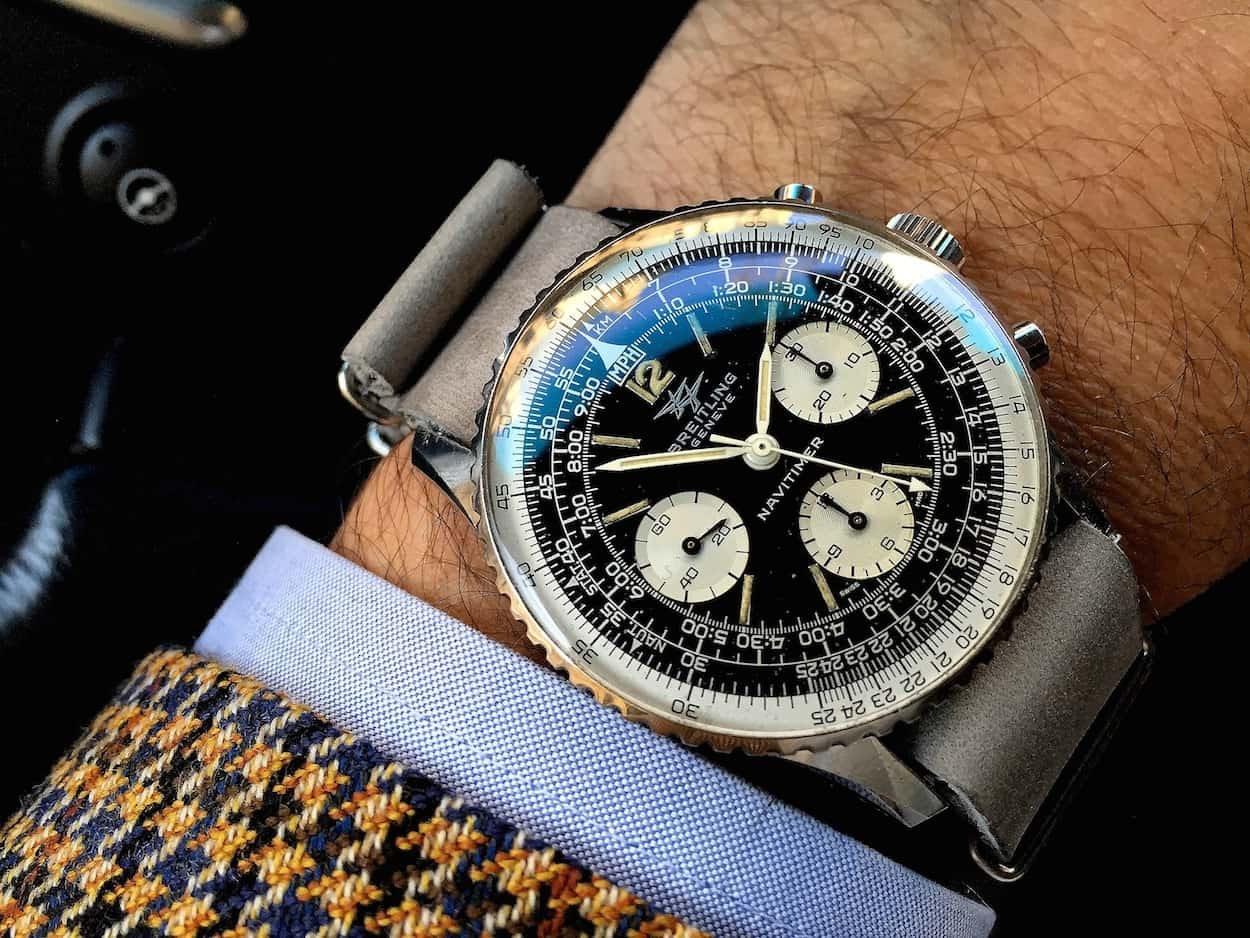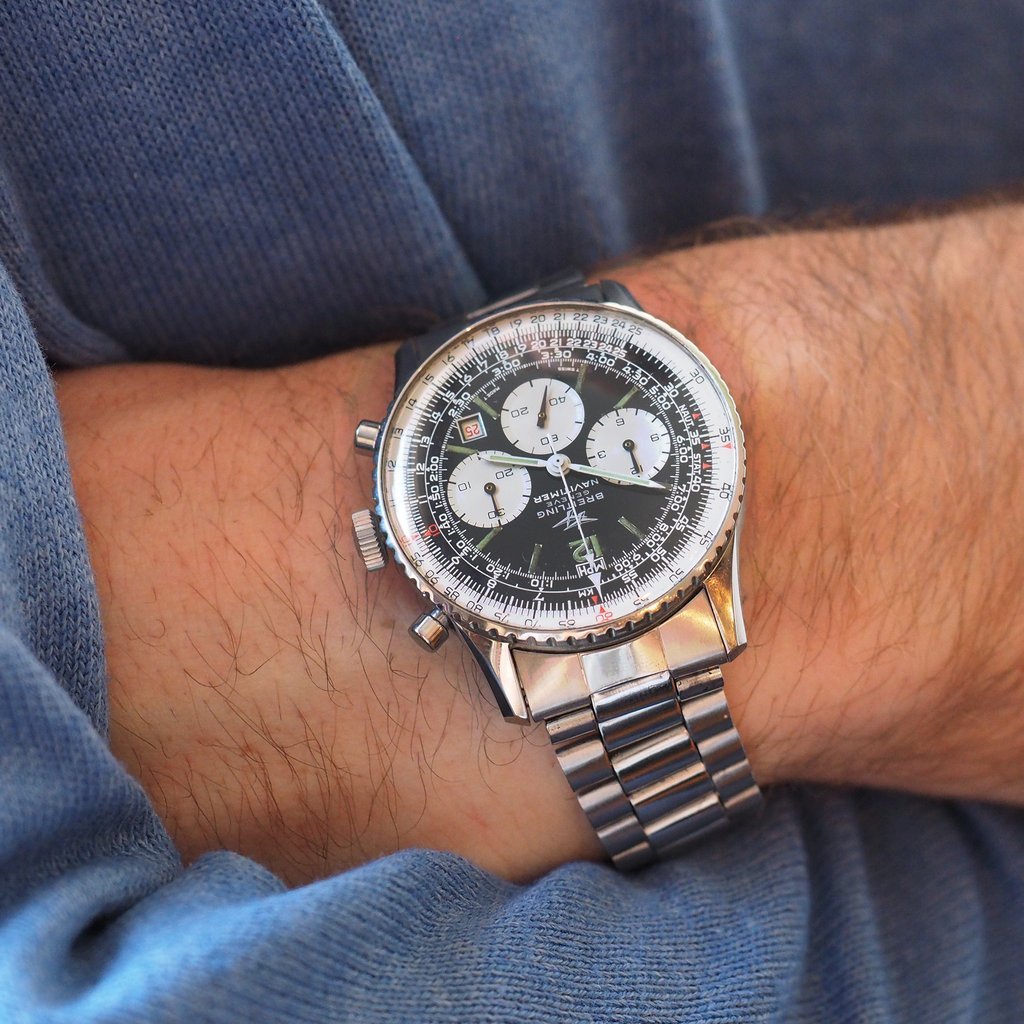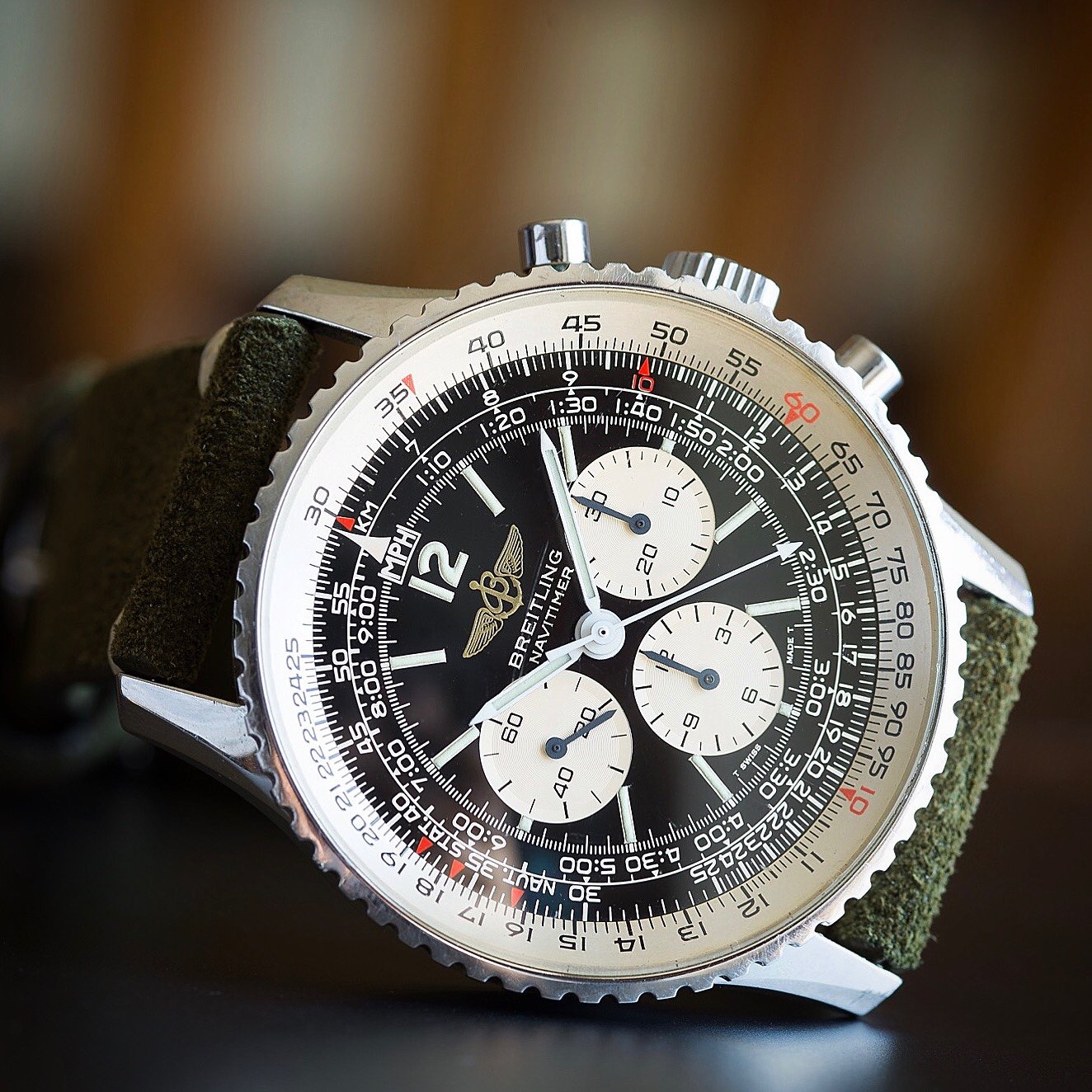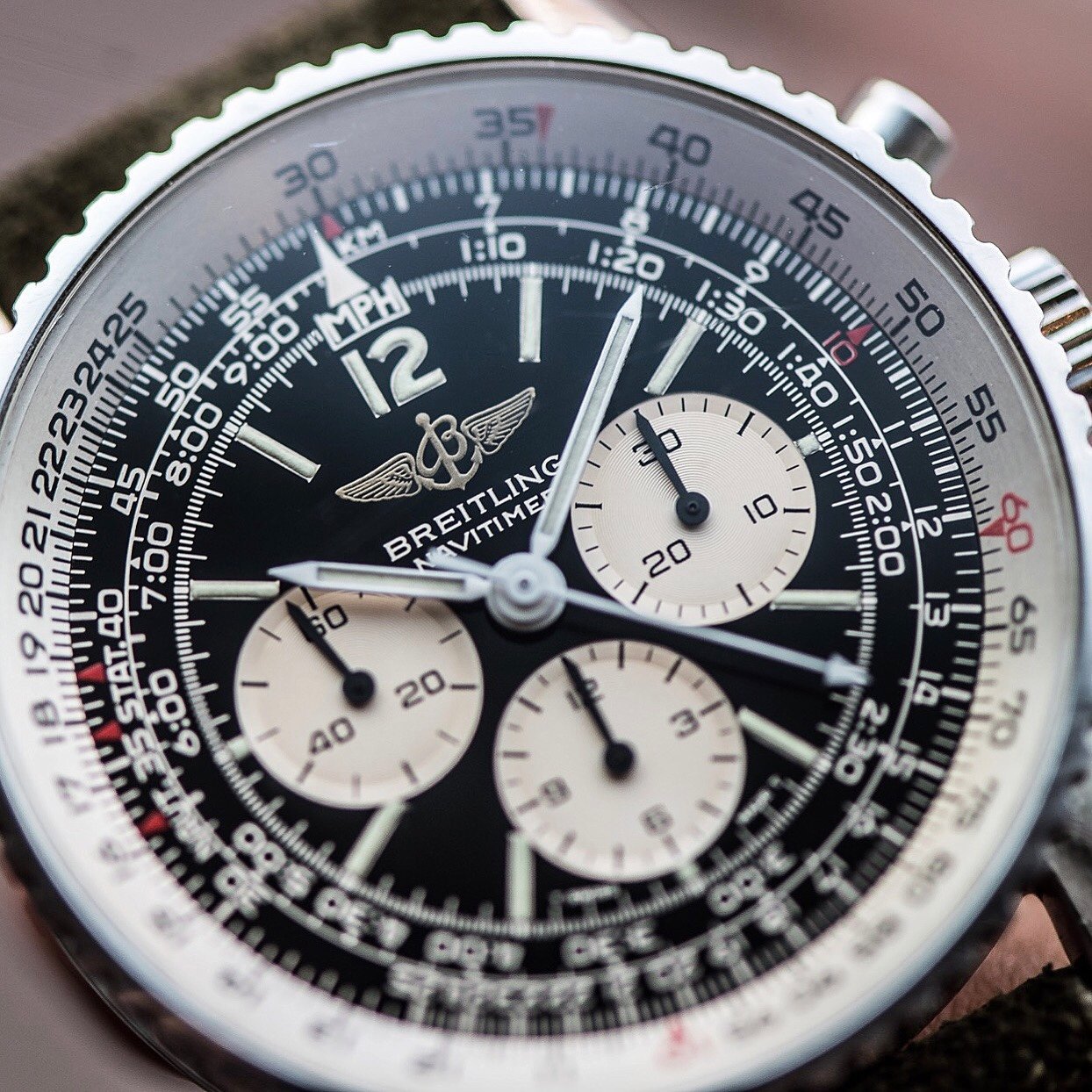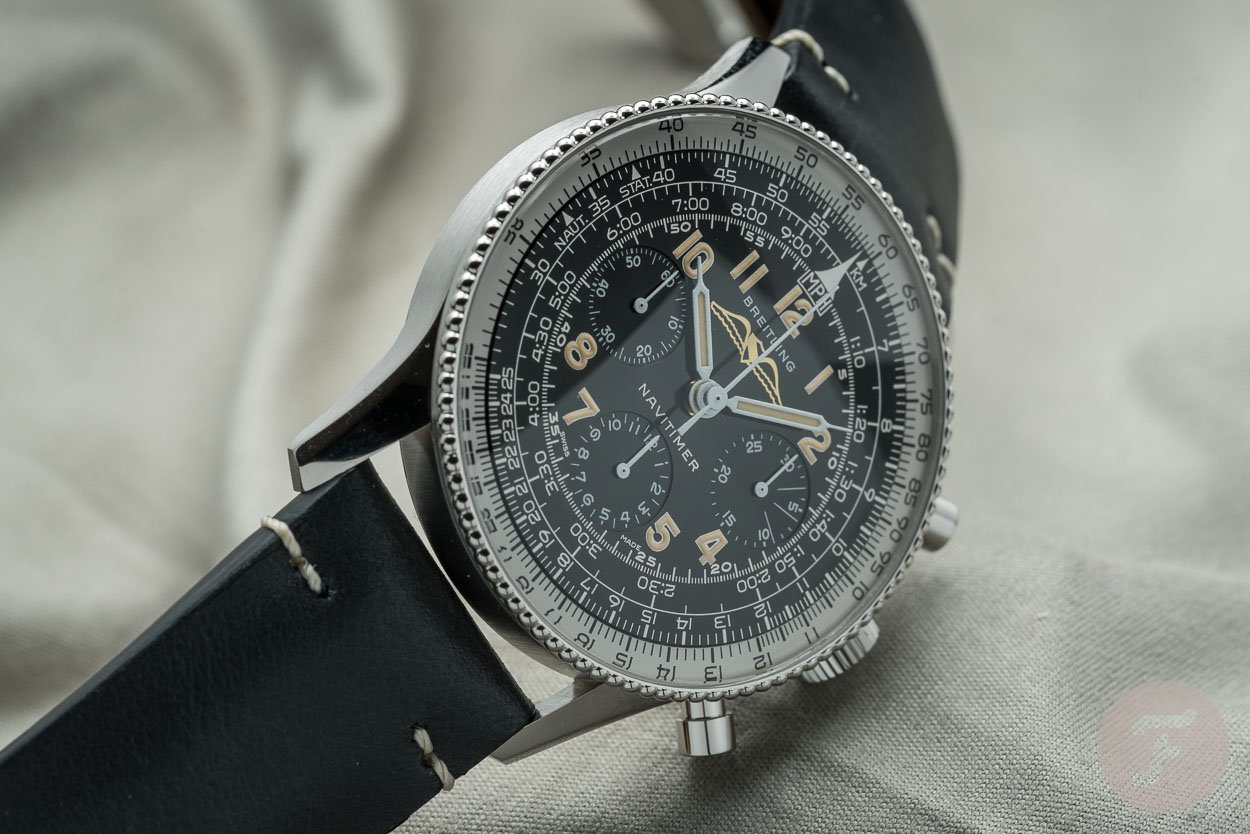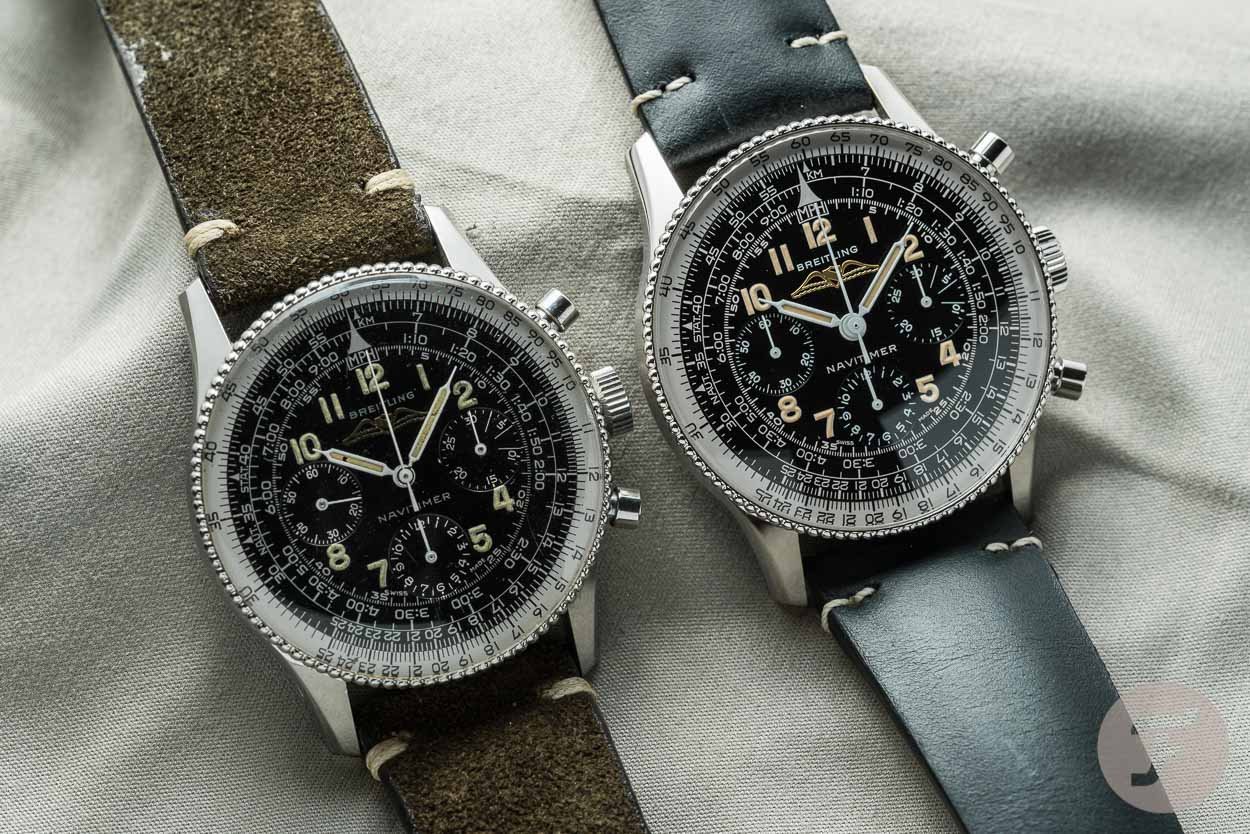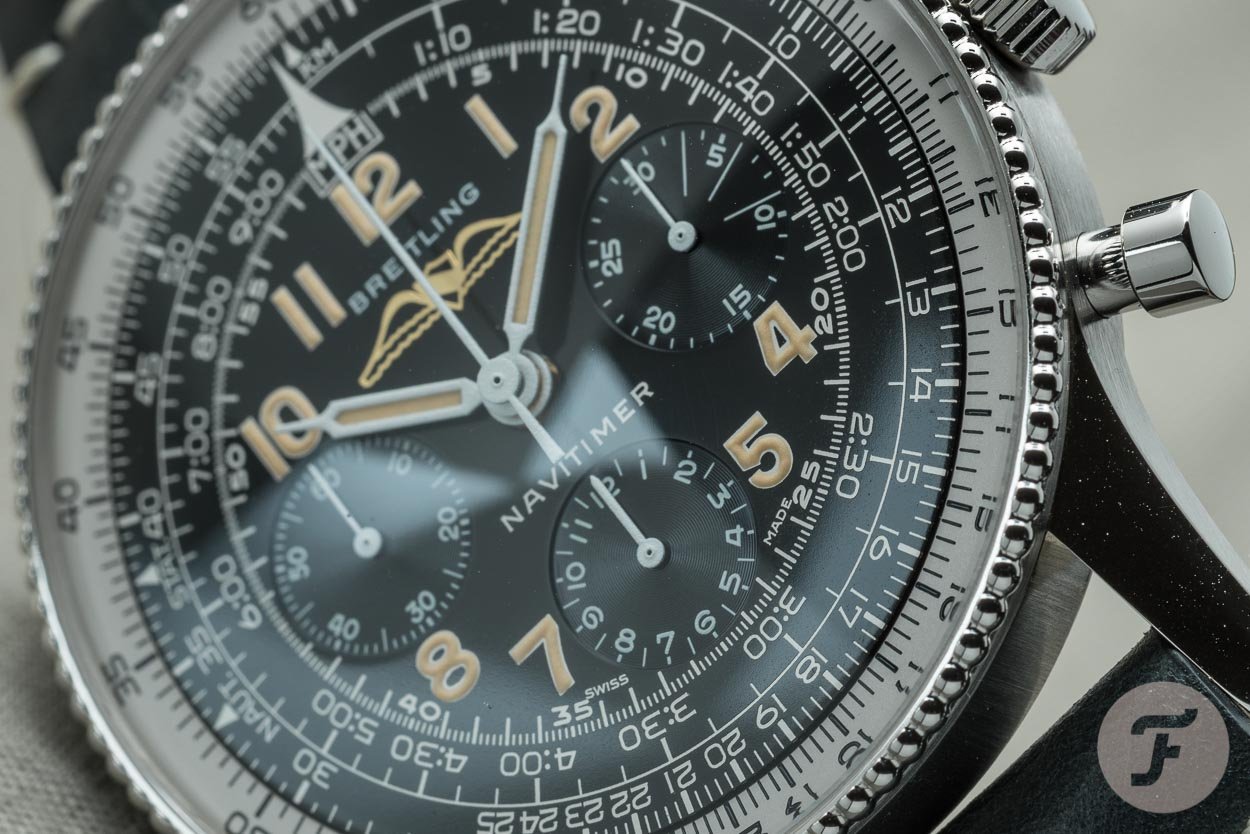Fratello’s Top 5 Breitling Navitimer References Ever Produced
Another Friday, another Top 5! In this series, we take one classic watch and choose our five favorite references ever produced. Four of these references will be based on the historical importance of the specific watch in the grand scheme of things. Though there may be some overlap, it’s not a question of which references are the most collectible or of the highest value on the market. The fifth pick is our Fratello favorite that considers the current market price and collectability, potentially making it a sleeper reference. As such, the last pick could be described as our wild card. This week, we’ll take a look at the Breitling Navitimer. We have selected what we believe are the best five references for Breitling’s iconic pilot’s watch.
In the series of Buying Guide articles that I wrote, I explained that any short article like this will never truly do the Breitling Navitimer justice. The watch has a history that reads like a novel covering seven decades, so this article will merely scratch the surface. But we’re going to try to explain what our favorite Navitimer references are and why. The first four picks are historically relevant, and for the fifth pick, we have chosen our favorite reference that flies somewhat under the radar. So let’s get going.
Breitling Navitimer ref. 806
Breitling introduced the Navitimer as an ultra-capable aviator’s watch for the Aircraft Owners and Pilots Association (AOPA) in 1954, officially giving it reference number 806 the following year. The watch’s unique looks were the result of its functions and features, which included a slide rule and a three-register chronograph. The Navitimer took the concept of the slide rule from the early 1940s Chronomat and upgraded it with the functionality of an E6B flight computer. When the Navitimer debuted, it was huge for the time at 40mm in diameter. But just like with the 41mm AVI ref. 765, the size made the watch more legible and functional in the cockpit, especially with such a complicated dial. And the earliest Navitimers also look bigger than their dimensions suggest due to the slim bezels and flattish acrylic crystals. Beneath them, the early Navitimers featured “all black” dials and boasted “beaded” bezels.
The earliest Navitimers from 1954, known as “Pre-806” models, were powered by the legendary Valjoux 72 movement and are very rare. In 1955, Breitling switched to the Venus 178 movement, which powered many of the brand’s other chronographs. The Navitimer 806 was available in stainless steel, gold-plated, and full-gold versions. All of these came with the AOPA wings logo on the dial until late 1964, and there are many variations with and without the Breitling signature. If you want a Pre-806 with the Valjoux 72 movement, prepare to shell out serious cash. These days, they start at roughly €20K and go up quickly depending on the condition. A vintage Navitimer ref. 806 with the Venus 178 movement from the 1950s starts at roughly €9K and moves up considerably depending on the condition.
Breitling Navitimer ref. 806 “Reverse Panda”
Miles Davis was one of the icons from the 1960s that famously wore a Breitling Navitimer ref. 806. But he wasn’t the only icon from the ’60s that famously wore the Navitimer. As most of you will know, racing drivers Jim Clark and Graham Hill also wore their iconic Navitimer ref. 806 in the 1960s. That’s why the second spot on this list goes to the Navitimer ref. 806 “Reverse Panda” that came in a wide variety of executions. From 1965 on, the dial layout of the Navitimer changed to a reverse panda configuration. On top of that, Breitling also switched to a bezel with straight-cut or serrated ridges. It’s this Navitimer with the reverse panda dial and straight-cut bezel that graced the wrists of Miles Davis, Jim Clark, and Graham Hill.
The Navitimer ref. 806 from the late 1960s is very much up to date with today’s specs. The watch features a 41mm case with a 22mm lug spacing. But despite its rather substantial size, the watch is very easy to wear. A big part of that comes from the crystal being rather flat and keeping the watch from becoming too thick and chunky. While the attraction of the Navitimer is a combination of things, the biggest star of the show is, without a doubt, the busy dial. And every detail on the dial serves a purpose, further enhancing the attraction and making the Navitimer the icon it is today. If you would like to own this slice of cool, prepare to pay anywhere between roughly €5K and €10K for a steel Navitimer ref. 806 “Reverse Panda” from the late 1960s.
Breitling Navitimer Date ref. 7806
The Breitling Navitimer ref. 7806 was introduced in 1972, and it is a much-talked-about Navitimer. The ref. 7806 was the first Navitimer in this traditional case style to feature a date function (the Chrono-Matic “Big Case” references 1806 and 1809 came first in 1969). As you can see, the date aperture is tucked away between the markers at 4 and 5 o’clock. For this Navitimer Date, Breitling used the manual-winding Valjoux 7740 movement instead of the previous Venus caliber. But it was not the only change as the hour counter at six o’clock made way for a running seconds counter. On top of that, Breitling also changed the dial design, moving the “Navitimer” wording up and placing it under the “Breitling Geneve” text. Additionally, the brand added little hints of red to the black dial. Lastly, Breitling also added red accents to the slide rule for some extra color.
This ref. 7806 is a clear statement of the time it was released in. It is what gives this Navitimer its charm. And what I specifically like about the model in the picture is that the 41mm case works well with the 22mm-wide stainless steel bracelet. The folded Breitling three-row bracelet features the same twin-jet logo on the clasp as is used on the dial. If you would like to add a ref. 7806 to your collection, expect to pay roughly between €4K and €8K. On top of that, the special models issued to air forces of different countries also play a part in collectibility and the corresponding prices. While the Navitimer ref. 7806 might not be the most popular Navitimer, it certainly has its place in Breitling history.
Breitling Navitimer ref. 81600
When Willy Breitling sold the company to Ernest Schneider in 1979, the legacy of all the watches from the decades before was also passed on. But Schneider first focused on the new Breitling models like the Pluton, Jupiter, Chronomat, and the Aerospace. In 1986, the company finally decided to bring the Navitimer into a new era with the ref. 81600. The watch was in production in 1986 and 1987 and marked the return of one of the industry’s biggest icons. The Breitling Navitimer ref. 81600 brought back the full glory of the Navitimer without tampering with its looks or legacy too much. The watch was a respectful reintroduction of the classic Navitimer.
At 41.5mm in diameter with an 11.5mm thickness and a 22mm lug spacing, the ref. 81600 was the perfect continuation of the Navitimer and wasn’t influenced by the new designs the brand had released in the years before. The Navitimer ref. 81600 was powered by the legendary manually wound Lemania 1873 movement. The movement operates at 21,600vph, has 18 jewels, and provides a power reserve of 40 hours. The new Navitimer ref. 81600 was famously worn by French singer Serge Gainsbourg. He decided to put his Navitimer on a platinum racing bracelet. It is quite a bold choice, but it has made this specific Navitimer and that bracelet design synonymous with the style of the late 1980s. Finding a Navitimer ref. 81600 is still possible for roughly €3.5K–5K.
Breitling Navitimer 806 1959 Re-edition
The last pick is our wildcard. This might come as a surprise as it’s a re-edition of the famous Navitimer 806. But just read Michael Stockton’s lengthy review on this brilliant reissue, and it will tell you all you need to know. The Navitimer 806 1959 Re-edition that came out in 2019 is more than a modern version of a classic made for Navitimer collectors. If you ask me, it is the perfect modern Navitimer that celebrates the iconic looks of the watch with an up-to-date execution. And the attention to detail that went into creating this piece makes it an absolute winner.
As Mike explained, the Breitling Navitimer 806 1959 Re-edition has a 40mm stainless case with a 22mm lug spacing, in line with the vintage models. Just like the original the watch, comes in at 12.86mm thick and is water resistant to 30 meters. A great detail is that the exact number of 94 beads on its bezel also matches the 1959 model. As the 2019 re-edition is powered by the thicker modern-day Breitling B09 movement, the designers had to change the bezel height to mid-case ratio compared to the original watch to maintain the same thickness. Add the brilliant dial execution that recalls the early days of the Navitimer, and this is nothing short of a great tour de force. Breitling produced 1,959 pieces of the watch that sold out quickly, but you can still find one on the pre-owned market. Expect to see prices around €8K–8.5K, which is close to the original retail price from four years ago. What you get in return is a true modern homage to one of the industry’s biggest icons.
Final thoughts on the top Breitling Navitimer references
There you have it — a small walk through Breitling Navitimer history. As is always the case with lists like these, a wide variety of references could have been featured in this article. That’s why this list is the starting point of a bigger discussion. What is your favorite Breitling Navitimer reference, and why? Let us know in the comments section below. We will see you next week for another Top 5 list of references for a different classic watch.

